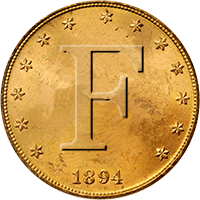DirtFlipper
New member
Howdy,
It's been my experience that soaking Wheats and Indians in hydrogen peroxide (heated or not) darkens them. Looking for an alternative, I tried using Magic Eraser, which is a commercial version of melamine foam (sold by the Mr. Clean folks). (It's not really an 'eraser' per se, but a sponge that has micro fiber like behavior to get into tiny crevices and lift dirt out). For coins that only have dirt on them, it's worked well for me. (Badly encrusted, pitted, corroded - no).
But I thought I'd run a little experiment to sort it out a bit more. I took a 1962 Memorial cent from circulation to be the 'control subject', and two Wheats that were found from the same place, same ground conditions. The 1940 Wheat I just rinsed with water and a toothbrush to knock off the large dirt bits, then soaked both it and the 1962 Mem in peroxide. The 1936 Wheat I cleaned with soap, water, and toothbrush, then used Magic Eraser on it.
The 1962 Memorial cent was completely inert in the peroxide. No bubbles, no fizzing, nothing. The 1940 Wheat fizzed away. Here's a pic of the results of the three of them side by side (order is 1936, 1962, 1940)
[attachment 173139 2010Sep10020.jpg]
As you can see, the 1962 Memorial cent did nothing, while the two Wheats have different shades.
I then thought I'd soak the 1936 Wheat in the peroxide next, to see what would happen to it. Here it is next to the 1962 first for reference:
[attachment 173140 2010Sep10023.jpg]
While soaking, it did fizz a little bit. Here's how it came out:
[attachment 173141 2010Sep10b002.jpg]
[attachment 173142 2010Sep10b003.jpg]
(you can click on the pics for large images)
So at least in this experiment, my Wheats both still darkened. This may suggest that there is still a layer of something that the peroxide is able to remove that the Magic Eraser is not, which results in a darker toning. Don't know why. I still prefer the lighter toning that Magic Eraser leaves, but peroxide is good for certain cases too. (Disclaimer: coins of numismatic value shouldn't be cleaned; leave that to the pros).
HH,
DirtFlipper
It's been my experience that soaking Wheats and Indians in hydrogen peroxide (heated or not) darkens them. Looking for an alternative, I tried using Magic Eraser, which is a commercial version of melamine foam (sold by the Mr. Clean folks). (It's not really an 'eraser' per se, but a sponge that has micro fiber like behavior to get into tiny crevices and lift dirt out). For coins that only have dirt on them, it's worked well for me. (Badly encrusted, pitted, corroded - no).
But I thought I'd run a little experiment to sort it out a bit more. I took a 1962 Memorial cent from circulation to be the 'control subject', and two Wheats that were found from the same place, same ground conditions. The 1940 Wheat I just rinsed with water and a toothbrush to knock off the large dirt bits, then soaked both it and the 1962 Mem in peroxide. The 1936 Wheat I cleaned with soap, water, and toothbrush, then used Magic Eraser on it.
The 1962 Memorial cent was completely inert in the peroxide. No bubbles, no fizzing, nothing. The 1940 Wheat fizzed away. Here's a pic of the results of the three of them side by side (order is 1936, 1962, 1940)
[attachment 173139 2010Sep10020.jpg]
As you can see, the 1962 Memorial cent did nothing, while the two Wheats have different shades.
I then thought I'd soak the 1936 Wheat in the peroxide next, to see what would happen to it. Here it is next to the 1962 first for reference:
[attachment 173140 2010Sep10023.jpg]
While soaking, it did fizz a little bit. Here's how it came out:
[attachment 173141 2010Sep10b002.jpg]
[attachment 173142 2010Sep10b003.jpg]
(you can click on the pics for large images)
So at least in this experiment, my Wheats both still darkened. This may suggest that there is still a layer of something that the peroxide is able to remove that the Magic Eraser is not, which results in a darker toning. Don't know why. I still prefer the lighter toning that Magic Eraser leaves, but peroxide is good for certain cases too. (Disclaimer: coins of numismatic value shouldn't be cleaned; leave that to the pros).
HH,
DirtFlipper

